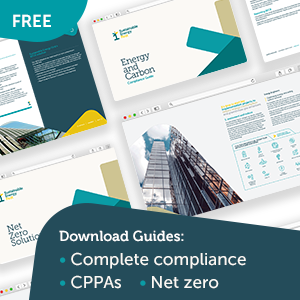Energy market prices are at a record high, presenting a major risk to corporate bottom lines. Alex Biggerstaff, Risk Manager at BiU explains what’s going on and offers some tips for trading in this volatile market.
What’s causing energy prices to rise?
Around 50% of our electricity comes from gas-fired power stations, so the gas shortage is hitting the market hard. The reasons behind the supply issues are complex:
- wind levels were low this summer across Europe, which impacted on renewable generation;
- there has been an ongoing decline in coal-fired generation, meaning there was an even greater demand for power from gas sources;
- Asian demand for LNG (liquefied natural gas) has been soaring this year, leaving less available for the EU and the UK;
- Russia has been exporting lower amounts of gas than usual;
- there was also a fire this month at the IFA interconnector site in Sellindge in Kent, part of the connector that links the French and British power grids, which impacted on supply.
The effect of this was being more strongly felt on the Near Curve (winter 21) than further along the Curve (winter 22 onwards) meaning there was a lot of “backwardation” in the energy market, which is when the future contracts are cheaper than the nearer contracts, for example winter 21 at £230 versus winter 22 at £116. However, the far curve is starting to ramp up in price, winter 22 has moved up £25 since 20th September.
How can customers protect themselves? Pro-active risk management
As we head into winter, demand for gas will increase and our supply issues are likely to get further exacerbated – we’ve already seen some large movements in recent days. As we are in a rising market, the sooner a customer thinks about extending their supply contracts, the cheaper the rate they will ultimately pay.
When it comes to supply contracts, there are two types, fixed or flexible:
- Fixed means you are given a price on the day from the supplier, and this is what you pay for the duration of the contract.
- Flexible gives the freedom to purchase or sell the energy at any time before delivery.
The disadvantage of fixed is that the market could start to fall the day after you sign a contract, but you are stuck in at that price you agreed. Fixed is also a little difficult to price at the moment; suppliers are pulling their price books regularly, so any fixed quote will have a lot of risk built into it, to allow time for the customer to review and accept the quote. The markets are moving very quickly; we’ve seen £50 movements on the near curve today alone, and so suppliers have to price this risk in.
A flexible supply contract means the energy can be sold and repurchased at some point as the market falls, helping to protect businesses from the extremes of the energy market. Our procurement team are helping many corporate customers take this proactive, risk-managed approach.
Alternative options for businesses
In light of the price hikes and volatility, corporate power purchase agreements (CPPAs) have become much more attractive as a long-term sustainable hedge. These are typically 5-10 years, and they are an agreement with a generator to provide (usually) renewable power direct to the customer. This can often be at a substantial discount to the market. To learn more, you can read our business guide to CPPAs.
Another option is to extend your supply contract out further than you normally would. If your business only ever looks one year in advance, you are significantly limiting your options. Looking at a three year plus supply contract means that you can immediately take advantage of the backwardation in the market, as the future seasons are cheaper, as well as give the market more time to come down so that we can unlock the energy to improve upon the original rate.
If you’d like more advice on how to protect your costs in this volatile energy market, we’d love to talk to you. Get in touch with our risk management team for advice.








